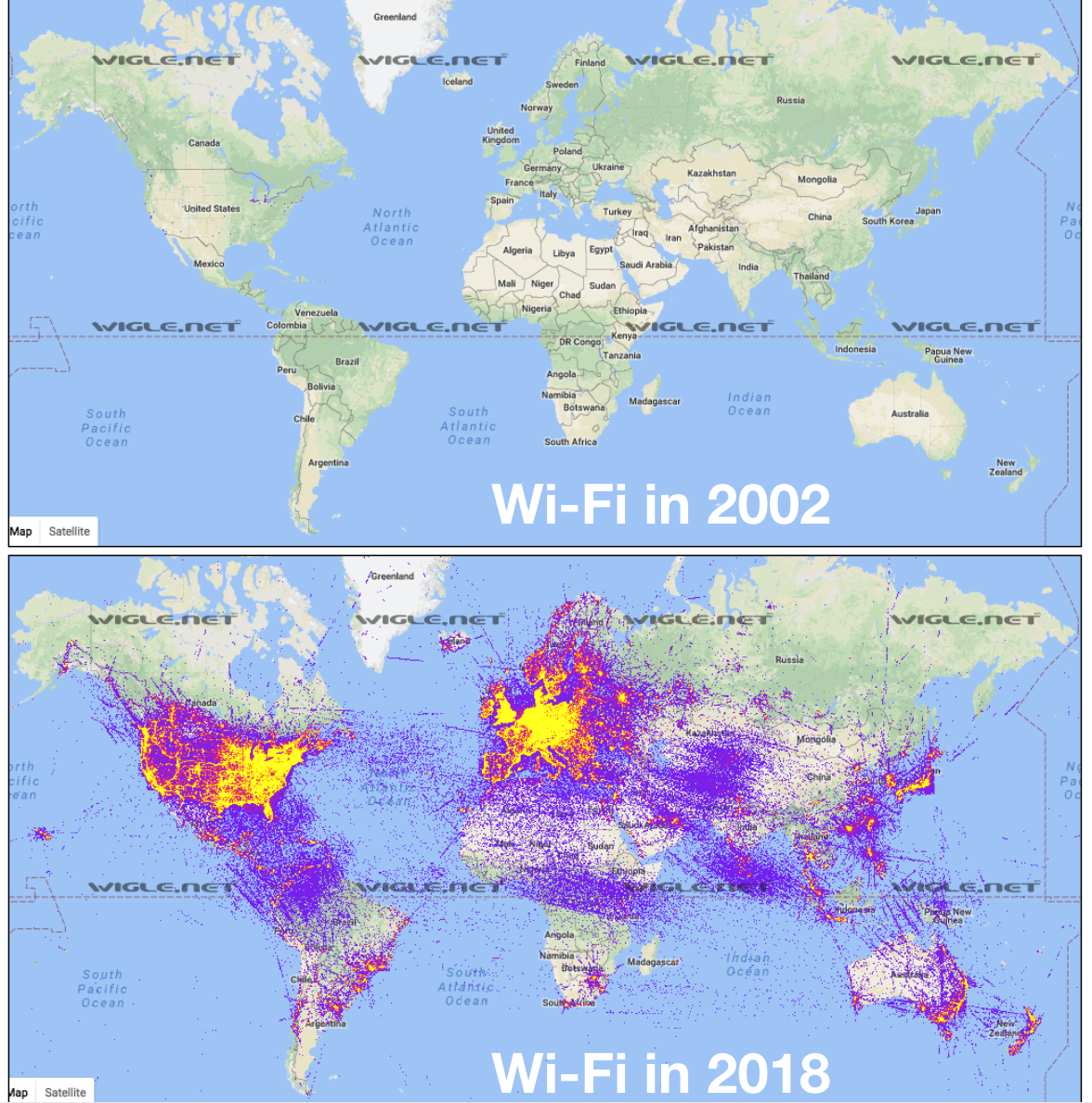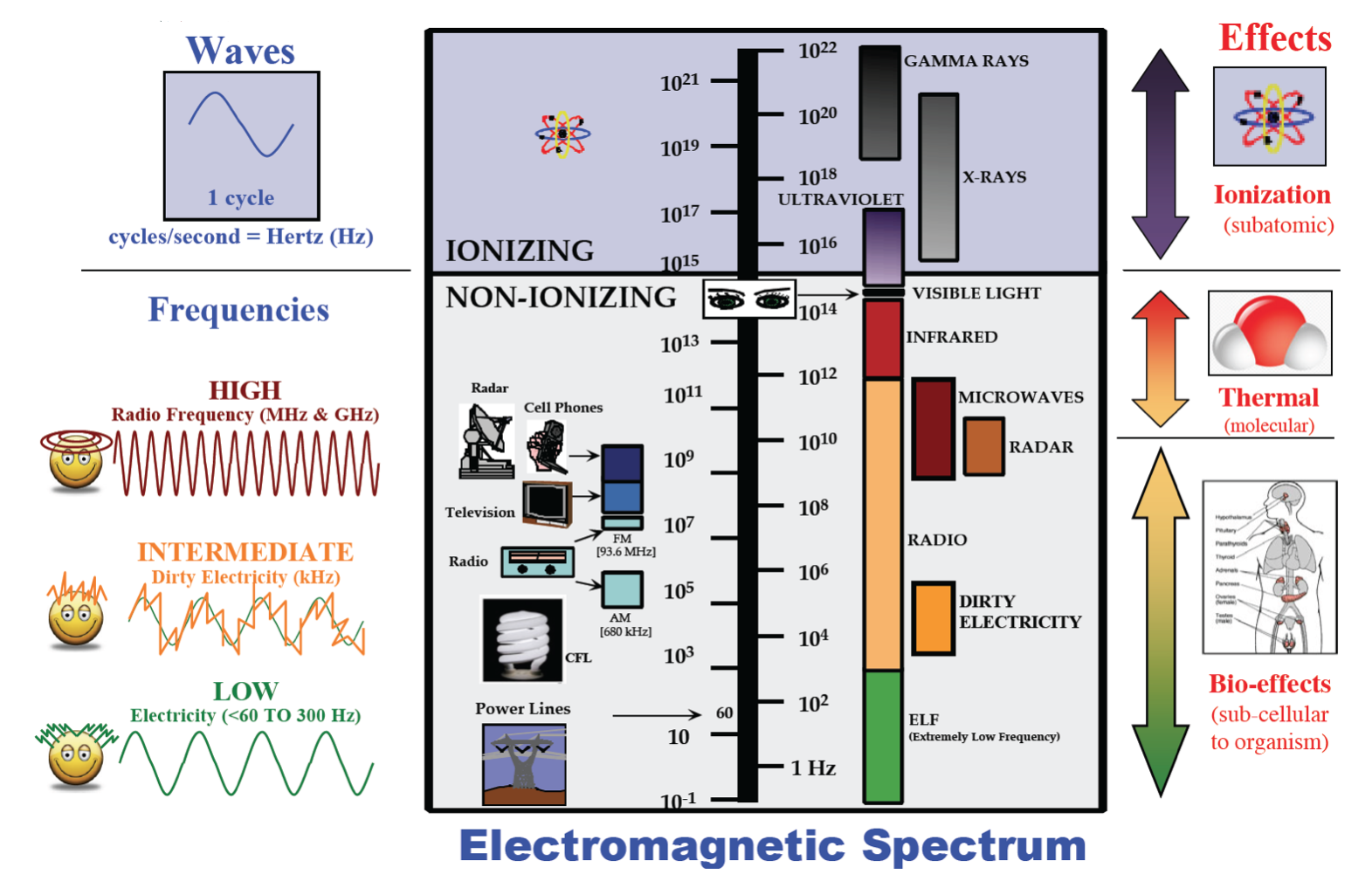What are some common sources of electromagnetic pollutions?
Jul 19th 2021
Electro-magnetic pollution falls into 4 categories:
- ELF EMFs: extremely low frequency electromagnetic fields that include both electric fields and magnetic fields (generally less than 3 kHz).See Electromagnetic spectrum below.
- RFR/MWR: radio frequency radiation (RFR) that includes frequencies from 3 kHz to 300 GHz. This part of the spectrum includes microwaves as well as millimetre waves (mmWaves) that are part of 5G (5th generation technology).
- HVFT: poor power quality or dirty electricity that consists of high frequency voltage transients (HFVT) within the range of 2 to 100 kHz.
- GC: ground current that is a combination of power frequency EMFs as well as HFVT that flow along the ground and along the surface of grounded objects like plumbing.
Changes in Exposure:
Our society is exposed to increasingly levels of electromagnetic pollution in the form of low frequency electric and magnetic fields associated with our use of electricity and radio frequency radiation generated by wireless technology. Common sources of electrosmog found outside buildings include power lines, transformers, cell phone antennas, TV and radio broadcast antennas and radar. Common sources inside buildings include electric wiring, electric and electronic appliances, fluorescent lights, most LED light bulbs, wireless devices including cordless phones, cell phones, Wi-Fi, baby monitors, wireless gaming stations, smart meters, smart appliances, wireless security systems, as well as any device that uses either bluetooth or Wi-Fi.

Electromagnetic Spectrum
Electromagnetic spectrum is arranged according to frequency and this is expressed in Hertz (Hz) or cycles per second.The higher the frequencies the smaller the wavelength. Different parts of the spectrum are given different names and these have specific characteristics and hence different uses.
The part of the spectrum that we are most concerned about regarding EHS is the part enclosed within the orange box.
These frequencies are called “non-ionizing” since they don’t have enough energy to break chemical bonds. However, these frequencies are know to cause heating, electric shock and to generate oxidative stress within living organisms. Exposure guidelines are based on heating only in some countries and on a precautionary approach in others and hence range orders of magnitude. The precautionary guidelines are the most protective since biological effects occur well below the heating threshold.


